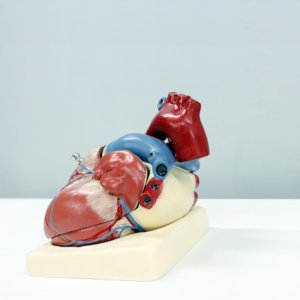
World Bipolar Disorder Day Aims to Reduce Stigma
 By Miriam Bello | Senior Journalist and Industry Analyst -
Wed, 03/30/2022 - 16:58
By Miriam Bello | Senior Journalist and Industry Analyst -
Wed, 03/30/2022 - 16:58
March 30 marks the World Bipolar Disorder Day, which is observed to reduce stigma, increase awareness and promote inclusion for those living with this disorder. This mental disorder impacts about 3 percent of the global population and around 3 million people in Mexico.
Bipolar disorder, also known as manic depression, is an affective disorder characterized by sustained periods of depression or mania that can be chronic or episodic, explains the National Neurology Institute (INNN). It can cause unusual, often extreme and fluctuating changes in mood, energy and activity level and concentration.
There are three basic types of bipolar disorders according to the US’ National Institute of Mental Health (NIMH); Bipolar I disorder, which is defined by manic episodes that last at least seven days (most of the day, nearly every day) or when manic symptoms are severe enough to require hospital care. Bipolar II disorder is defined by a pattern of depressive episodes and hypomanic episodes but not by the extreme manic episodes described above. Cyclothymic disorder (also called cyclothymia) is defined by persistent hypomanic and depressive symptoms that are not severe enough or last long enough to qualify as hypomanic or depressive episodes.
Most of the time, bipolar disorder presents or begins during the late teen years or early adulthood, explains the NIMH. On certain occasions, bipolar symptoms can occur in children. Although symptoms come and go, bipolar disorder usually requires lifelong treatment and does not go away on its own. Bipolar disorder can be a major factor in suicide, job loss, and family discord but proper treatment can lead to better outcomes.
In Mexico, the unemployment rate for people with bipolar disorder is 60 percent. For mixed type conditions with mania and depression at the same time, it can reach 80 percent, according to psychiatrist Manuel Sánchez de Carmona, former President, International Society for Bipolar Disorders (ISBD).
For those affected by this disorder, lack of treatment can lead to cognitive impairment and brain atrophy, in addition to putting life at risk due to the suicidal thoughts that depressive episodes generate, reports the Fray Bernardino Álvarez Psychiatric Hospital (HPFBA).
For this reason, the correct identification of the symptoms and diagnosis by a psychiatric professional is essential for the provision of the appropriate treatment, said Jose Ibarreche, Head of Ambulatory Services, HPFBA. So far, diagnosis in Mexico is generally poor. According to El Universal, up to 70 percent of the millions of cases in the country receive an erroneous diagnosis by doctors.
As a lifelong condition, bipolar disorder’s primary treatments include mood stabilizer medications and psychological counseling (psychotherapy) to control symptoms, and also may include education and support groups, according to Mayo Clinic.
















